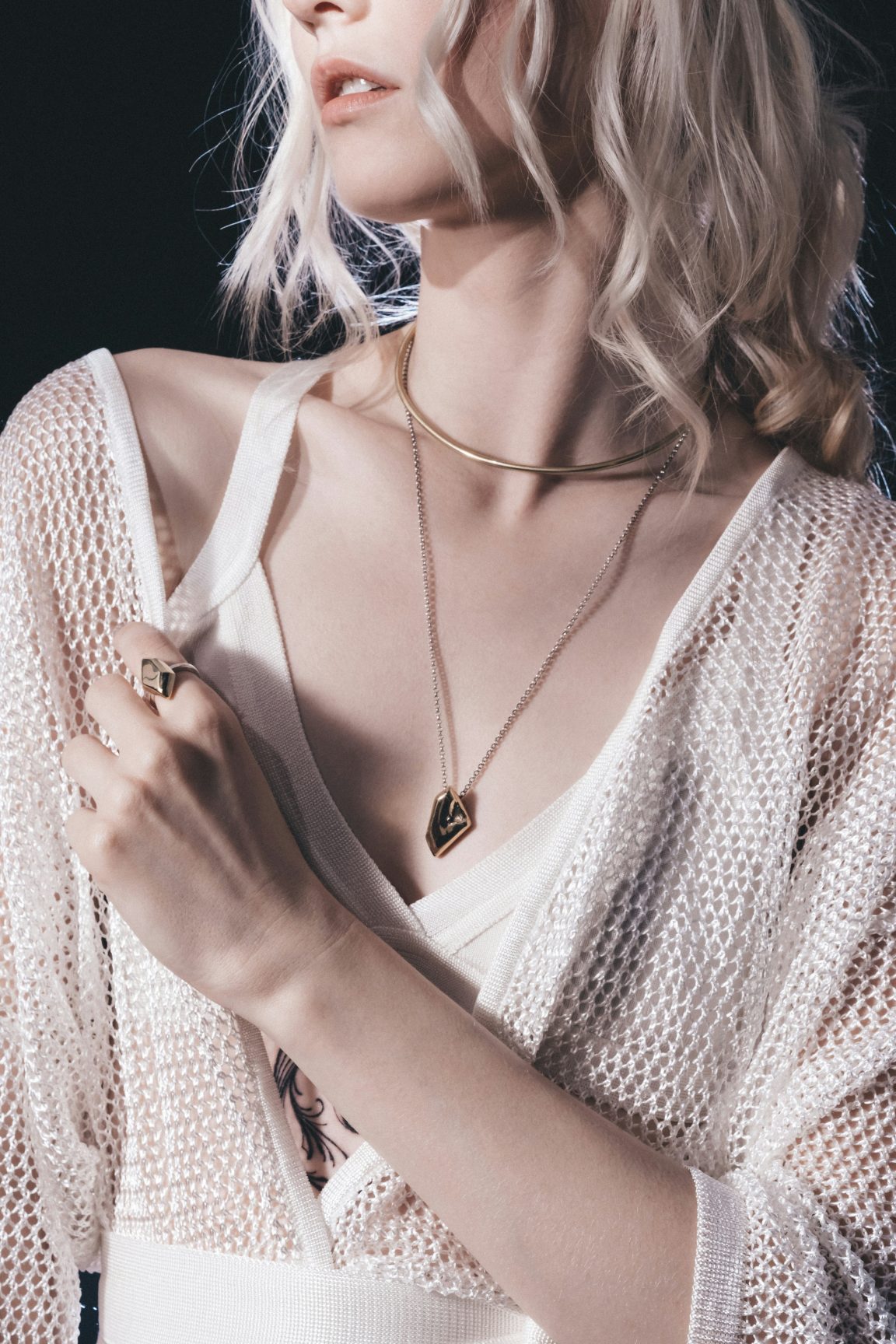Identifying Antique Jewelry Pieces
The allure of antique jewelry is undeniable. Each piece tells a story, a glimpse into the past that adds to its charm and value.
But how can you distinguish a genuine antique from a clever reproduction?
This guide will help you navigate the fascinating world of antique jewelry. We’ll delve into the unique characteristics of various types, from antique rings to brooches, and from Victorian era pieces to Art Deco designs.
You’ll learn how to identify hallmarks, assess wear and patina, and understand the importance of provenance.
Whether you’re a seasoned collector or a novice enthusiast, this guide will equip you with the knowledge to identify authentic antique jewelry pieces.
Understanding Antique Jewelry: Definitions and Historical Significance
Antique jewelry is a term often used to describe pieces that are at least 100 years old. These pieces are valued not only for their beauty and craftsmanship but also for their historical significance.
Each piece of antique jewelry is a tangible link to the past. It reflects the aesthetics, culture, and social norms of the time it was created.
Here are some key historical periods often associated with antique jewelry:
- Georgian Era (1714-1837): Jewelry from this period often features intricate designs, precious gemstones, and handcrafted details.
- Victorian Era (1837-1901): Named after Queen Victoria, this era saw a variety of styles, from ornate designs to simpler, more sentimental pieces.
- Art Nouveau (1890-1910): This period is known for its organic and curvilinear designs, often inspired by nature.
- Edwardian Era (1901-1910): Jewelry from this era is characterized by elegant and delicate designs, often using platinum and diamonds.
- Art Deco (1920-1935): This period is known for its bold, geometric designs and the use of a wide range of materials.
Understanding the historical context of these periods can help you appreciate the uniqueness and value of each piece of antique jewelry.
Antique vs. Vintage vs. Estate Jewelry: Knowing the Difference
The terms “antique,” “vintage,” and “estate” are often used interchangeably in the jewelry world, but they each have distinct meanings. Understanding these differences can help you make informed decisions when buying or selling pieces.
Antique jewelry, as mentioned earlier, refers to pieces that are at least 100 years old. These pieces often have a high level of craftsmanship and are valued for their historical significance.
Vintage jewelry, on the other hand, is typically less than 100 years old but is still old enough to represent a past era. It can range from mid-century modern designs to the bold styles of the 1980s.
Estate jewelry is a broader term that refers to any piece of jewelry that was previously owned, regardless of its age. It can include both antique and vintage pieces, as well as more recent designs.
The Craftsmanship of Antique Jewelry: Materials and Techniques
The craftsmanship of authentic antique jewelry is often what sets it apart from modern pieces. The techniques used by jewelers in the past were often labor-intensive and required a high level of skill.
Materials used in antique jewelry also differ from those commonly used today. Precious metals like gold and silver were often used, along with gemstones like diamonds, rubies, and sapphires. However, you can also find pieces made with less common materials like jet, hair, and ivory, especially in mourning jewelry.
Here are some common techniques and materials used in antique jewelry:
- Hand engraving and etching
- Filigree work
- Pave setting
- Rose cut and old mine cut gemstones
- Use of seed pearls
- Enamel work
Hallmarks of Authenticity: Hallmarks and Maker’s Marks
Hallmarks and maker’s marks are often key indicators of a piece’s authenticity. These marks can provide valuable information about the piece, including its age, origin, and the identity of its maker.
Hallmarks are typically found on the inside of rings, the back of brooches, or the clasps of necklaces and bracelets. They can indicate the type of metal used, the purity of the metal, and sometimes the country of origin. Maker’s marks, on the other hand, are unique symbols or initials used by specific jewelers or manufacturers.
However, it’s important to note that not all antique jewelry will have these marks. Some pieces may have been too small or delicate to mark, while others may have had their marks worn away with time.
Provenance and Value: The Importance of Jewelry’s History
The provenance, or history, of a piece of antique jewelry can greatly impact its value. Knowing who owned a piece, where it came from, and its journey can add a layer of intrigue and desirability.
However, provenance can be difficult to prove without documentation. Old receipts, photos, or letters can provide valuable clues. Even without these, don’t despair. The style, materials, and craftsmanship can often tell a story of their own.
Era-Specific Characteristics: From Victorian to Art Deco
Antique jewelry is a reflection of the era in which it was created. Each period has its unique characteristics, influenced by the social, political, and cultural trends of the time.
The Victorian era (1837-1901), for instance, saw jewelry that was ornate and romantic. Pieces often featured intricate designs, precious gemstones, and motifs like hearts and flowers. Mourning jewelry, made popular by Queen Victoria herself, was also a significant trend of this period.
Moving into the 20th century, the Art Deco period (1920-1935) brought a stark contrast. Jewelry from this era is characterized by geometric shapes, bold colors, and a sense of modernity. It was heavily influenced by the excitement of the Jazz Age and the discovery of King Tut’s tomb.
- Victorian era: Ornate, romantic designs with precious gemstones. Popular motifs included hearts and flowers.
- Art Deco: Geometric shapes, bold colors, and a sense of modernity. Influenced by the Jazz Age and Egyptian art.
Understanding these era-specific characteristics can help in identifying authentic antique jewelry pieces. It’s like a fascinating journey through time, with each piece telling its own unique story.
Wear and Patina: Assessing Age and Authenticity
One of the telltale signs of authentic antique jewelry is the presence of wear and patina. Over time, jewelry develops a certain sheen or coloration, known as patina, due to oxidation or wear.
This patina can give clues about the age of a piece. For instance, gold doesn’t tarnish, but it can show signs of wear at points of contact, such as the back of a brooch or the inside of a ring. Similarly, silver develops a warm, grayish patina over time. Understanding these signs can help you assess the authenticity of antique jewelry.
The Role of Jewelry Boxes in Antique Jewelry Preservation
Antique jewelry boxes play a crucial role in preserving the condition of antique jewelry. These boxes, often lined with velvet or silk, provide a safe and secure environment for delicate pieces.
Not only do they protect the jewelry from physical damage, but they also shield it from environmental factors. For instance, exposure to air and humidity can accelerate the tarnishing process in silver jewelry. Therefore, storing antique pieces in a jewelry box can help maintain their original luster and prolong their lifespan.
Identifying Authentic Pieces: Rings, Necklaces, Brooches, and More
Identifying authentic antique jewelry requires a keen eye and a basic understanding of historical styles and techniques. From rings and necklaces to brooches and cameos, each piece tells a unique story.
Here are some key features to look for in different types of antique jewelry:
- Rings: Look for older stone cuts like the Old Mine Cut or Rose Cut.
- Necklaces: Pay attention to the style and craftsmanship, which can indicate the era it was made.
- Brooches and Cameos: Look for signs of hand-carving and older fastening mechanisms.
- Mourning and Masonic Jewelry: Look for specific symbols and inscriptions.
Antique Rings: Settings and Stone Cuts
Antique rings often feature unique settings and stone cuts that are rarely seen in modern jewelry. For instance, the Old Mine Cut, characterized by a squarish shape and large facets, was popular in the 18th and 19th centuries.
Antique Necklaces: Styles Through Time
The style of an antique necklace can often hint at its age. For example, choker-style necklaces were popular during the Victorian era, while longer, pendant-style necklaces were more common in the Art Nouveau period.
Brooches and Cameos: Sentimental Jewelry
Antique brooches and cameos are often sentimental pieces, given as gifts or worn to commemorate a loved one. Authentic pieces typically feature intricate hand-carving and older types of fastenings, such as C-clasps.
Mourning and Masonic: Jewelry with Symbolism
Mourning jewelry and Masonic jewelry are rich in symbolism. Mourning pieces often feature dark gemstones and motifs like urns or weeping willows, while Masonic pieces are adorned with specific symbols like the square and compass.
Caring for Your Antique Jewelry: Maintenance and Preservation
Proper care and maintenance are crucial to preserving the beauty and value of your antique jewelry. This includes regular cleaning with gentle solutions, avoiding harsh chemicals, and storing pieces in a cool, dry place.
It’s also important to handle antique jewelry with care. Remember, these pieces have already withstood the test of time. With a little extra attention and care, they can continue to be enjoyed for generations to come.
Where to Buy and How to Sell: Navigating the Antique Jewelry Market
Navigating the antique jewelry market can be a daunting task, especially for beginners. However, with a little knowledge and patience, you can find authentic pieces that suit your taste and budget. Antique shops, estate sales, and online platforms like eBay and Etsy are great places to start your search.
When it comes to selling, it’s important to know the value of your pieces. Consider getting an appraisal from a certified professional. This will not only give you an idea of what your jewelry is worth, but it can also provide potential buyers with confidence in their purchase.
Remember, the antique jewelry market is about more than just buying and selling. It’s about preserving history, appreciating craftsmanship, and enjoying the beauty of these timeless pieces. Whether you’re a collector, a dealer, or simply a lover of antique jewelry, there’s a place for you in this fascinating world.
Conclusion: The Timeless Appeal of Authentic Antique Jewelry
The allure of authentic antique jewelry lies not only in its aesthetic appeal but also in its historical significance. Each piece tells a story, reflecting the craftsmanship, style, and social context of the era in which it was created.
Whether you’re a seasoned collector or a novice enthusiast, the journey of identifying and appreciating antique jewelry is a rewarding one. It’s a journey that connects us with the past, celebrates the artistry of bygone eras, and adds a unique, timeless charm to our personal style.












GIPHY App Key not set. Please check settings